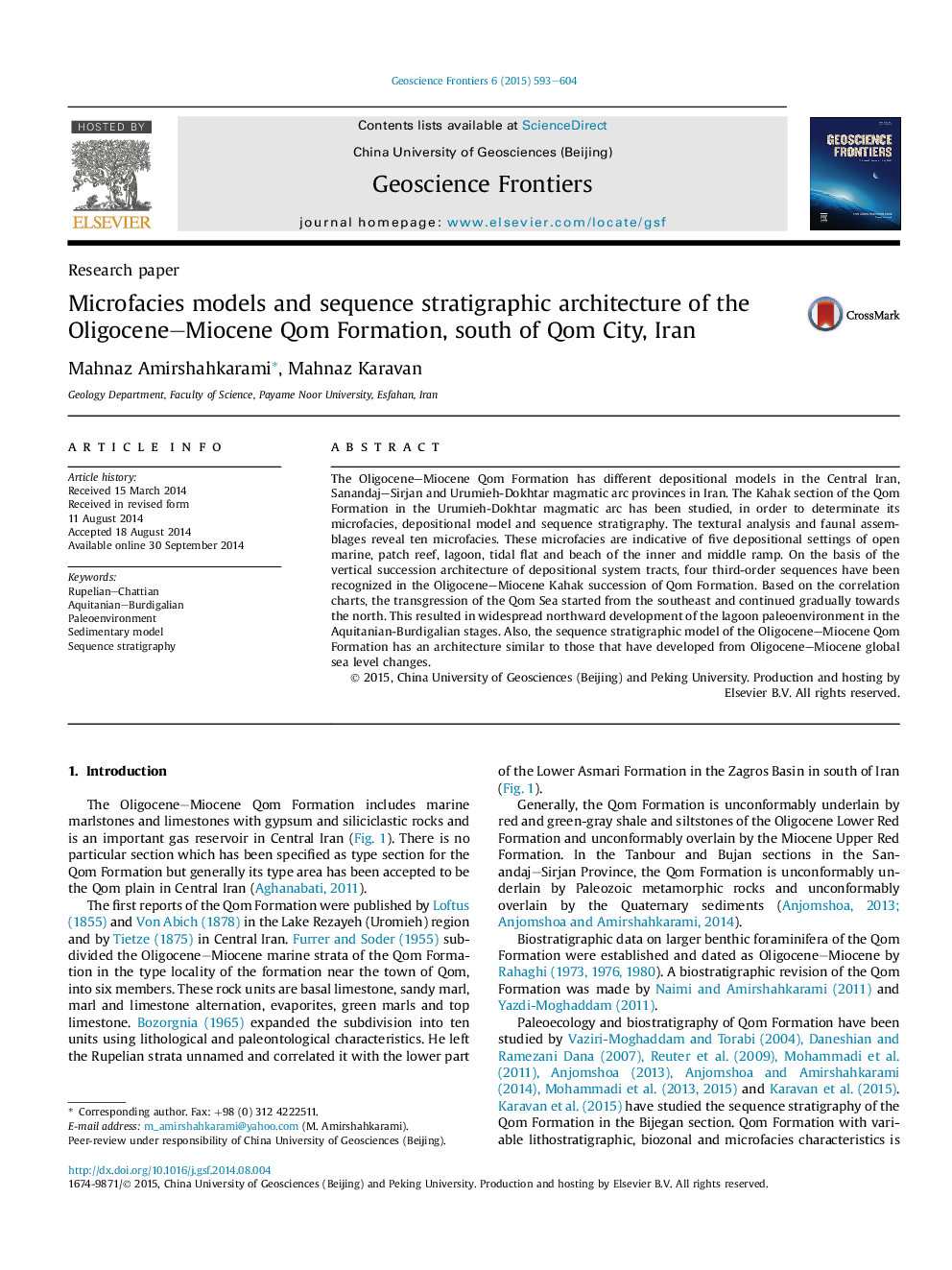| Article ID | Journal | Published Year | Pages | File Type |
|---|---|---|---|---|
| 4681609 | Geoscience Frontiers | 2015 | 12 Pages |
•Microfacies of the Oligocene-Miocene depositions in Kahak area, Iran.•Depositional settings and sequence stratigraphy.•Sea level changes correlated with global models.
The Oligocene–Miocene Qom Formation has different depositional models in the Central Iran, Sanandaj–Sirjan and Urumieh-Dokhtar magmatic arc provinces in Iran. The Kahak section of the Qom Formation in the Urumieh-Dokhtar magmatic arc has been studied, in order to determinate its microfacies, depositional model and sequence stratigraphy. The textural analysis and faunal assemblages reveal ten microfacies. These microfacies are indicative of five depositional settings of open marine, patch reef, lagoon, tidal flat and beach of the inner and middle ramp. On the basis of the vertical succession architecture of depositional system tracts, four third-order sequences have been recognized in the Oligocene–Miocene Kahak succession of Qom Formation. Based on the correlation charts, the transgression of the Qom Sea started from the southeast and continued gradually towards the north. This resulted in widespread northward development of the lagoon paleoenvironment in the Aquitanian-Burdigalian stages. Also, the sequence stratigraphic model of the Oligocene–Miocene Qom Formation has an architecture similar to those that have developed from Oligocene–Miocene global sea level changes.
Graphical abstractFigure optionsDownload full-size imageDownload as PowerPoint slide
